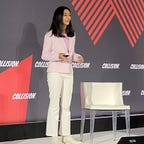Female Fertility:A Ticking Time Bomb
Female fertility is a ticking time bomb, forcing women to make difficult choices between their families and careers.
In the 1500’s up until the 1800’s, human life expectancy was as low as 30 and 40 years of age. This is different today; the global life expectancy is an average of 73. See, our life spans have increased, but the reproductive lifespan of a woman has not.
Due to this change in life expectancy, women are going to be living longer after menopause than before. Why? Because our bodies were never designed to live past reproductive age.
For some reason (which we don’t yet know), ovaries age 2 times faster than the rest of the body.
That being said, women are born with all of the eggs we will ever have — 7 million eggs at 2 weeks in utero. By the time they are born, the egg count decreases 7 fold, to only 1 million eggs. This number continues to decrease. During childbearing age, she has around 150k eggs, but by the time she is 40 she will only have 5–10 thousand eggs.
When these eggs run out, women reach menopause (occurs at the average age of 52). This is a massive reproductive decline midlife, which is quite different to our male counterparts producing several million sperm per day during spermatogenesis.
Menopause
Menopause is a natural, biological process that women go through in their 40s or 50s, marking the end of your menstrual cycle. During this time, the body undergoes significant hormonal changes, where the amount of estrogen (category of sex hormone responsible for regulation of female reproductive system) and progesterone (steroid hormone which regulates menstruation and prepares for pregnancy) decrease. Some women use hormone therapy as a replacement to increase these hormone levels.
Menopause is associated with unpleasant symptoms (sad emoji) like difficulty sleeping, feeling forgettable, hot flashes, irritability, and night sweats. The stages of menopause are:
Perimenopause (menopause transition phase):
- 8 to 10 years before menopause
- Lasts until menopause, till eggs stop being released
- Still having menstrual cycles and can get pregnant
Menopause:
- End of menstrual cycles
- No egg release and little estrogen production
- Diagnosed when woman has gone without having a period for 12 months consecutively
Post Menopause:
- After women has not menstruated in a year
- Symptoms mentioned before may ease
- Some women symptoms may last as long as a year
- Lower estrogen levels = negative effect on women’s health (bone, cognitive, cardiovascular, immune function) and increased risk for osteoporosis and heart disease
The Problem
Women don’t know when their time is running out to have kids. This is because the only information available is the number of eggs and measurement of hormone levels. There is currently no non-invasive, long term test to biologically assess the stage a women’s reproductive system is ageing. This has negative repercussions as many of a women’s life and career decisions may be centred around family planning and having children of their own.
Right now, increasing reproductive longevity consists of freezing eggs (mature oocyte cryopreservation used to save a woman’s ability to get pregnant for later in the future) and in vitro fertilization (IVF). These are the state of the art procedures. IVF has been around for 43 years, however we haven’t had a strong drive to find something new because it’s so economically favourable for a lot of people.
As I mentioned before- at 40 the egg count is around 2% of what is originally was. If we could extend that and give women 3% of their eggs by the age of 40, it would be incredible. This is not for women at 45–50 to have children, more so to keep hormonal balance and health for longer (women’s health is strongly tied to hormonal health).
Hormonal replacement therapy is the best treatment we have to scare away symptoms of menopause, however it only works if the receptors for the hormones are still intact because when hormones go away the receiver gets down regulated. The window to do this is somewhere between 0–6 years after menopause. Hormonal replacement is a viable option for women going through menopause, but it is a band aid solution.
Things to understand that we don’t know:
- Ageing of ovarian issues
- What makes a good egg
- Why the egg count numbers decline so fast
What We Should Be thinking More About
“You can’t impact what you can’t measure”
- Reframing diagnostics- how do we measure where a woman is at in their reproductive span (metrics).
- Finding hallmarks of ovarian ageing
- Looking for biomarkers and signatures of healthy ageing in the reproductive system. Targets that are promising include mitochondria in ovaries and eggs & inflammation in eggs
- Conducting basic science innovation in reproductive longevity
Reproductive longevity is one of the most underfunded fields; there hasn’t been a lot of public knowledge on the subject and there is a need for innovation. 50 million women in America are undergoing menopause, each year this increases by 2 million. That being said, in 2025 there is projected to be a billion women in menopause which is more than 10% of the population. This is a health burden on society (accumulation of negative health repercussions) and economic burden from decreased productivity. This is estimated to be a loss of 150 billion dollars per year. The health burden is estimated above 600 billion per year.
The status quo remains: we don’t have great models to study menopause and reproductive decline. We can’t study these things in humans of course, the optimal situation would be using human cells in a dish. We could also build a cellular model of an ovary/outlining the key features of ovaries to test therapeutics and see the effects on women’s bodies. Time is running out, the fertility clock is ticking; what will we choose to do?
